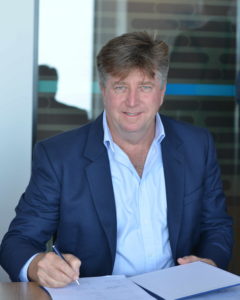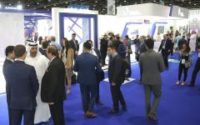ALEC Identifies Key Trends For The Construction Sector In 2021
ALEC, one of the UAE’s most diversified construction groups has identified what it believes to be the key trends expected to drive the industry during the year ahead.
Commenting on the topic, ALEC CEO, Kez Taylor, said: “While the pandemic has clearly caused many industries around the world to change tack, the prevailing construction trends are ultimately ones that were long overdue prior to the challenges of 2020. Today, we stand in a unique position to transform our industry into a healthy ecosystem, where all stakeholders are able to succeed by utilising the latest technology and a collaborative approach.”
Innovation
While the word itself has become a platitude in the lexicon of corporates for illustrating the adoption of progressive tools and technologies, the arrival and implementation of innovation within the construction industry has become a game-changer in terms of reducing risk while increasing efficiency. Whether from the use of BIM, which greatly increases accuracy in the design phase of a project, through to the use of hardware on site, innovation‘s importance will only increase in the years ahead and will be a decisive factor in the ongoing success of industry stakeholders.
At ALEC, its use of the latest design software has meant that potential issues are flagged in the early stages of a project, resulting in a significant saving of time, cost and resources in later stages. From a high-level approach, ALEC believes that consolidating ideas and resources is a far more effective approach to R&D, not only helping to spread initial investment risk, but to ensure the input of as many industry specialists as possible. In partnering with like-minded organizations, leading consultancies, tech companies, start-ups, universities and supply chains, great leaps can be made that help to change entire processes on site.
A great example of this being the collaboration between ALEC and Hilti, which yielded the region’s first autonomous drilling robot. Since its implementation, site teams have reported significant improvements in productivity thanks to the robot’s ability to follow digital plans, while alleviating site teams from the strenuous work of overhead drilling, allowing them to upskill and operate the robot itself.
Collaboration/ Enhanced communication
In addition to collaborating on innovative new ideas and products, ALEC believes a fundamental increase in communication between stakeholders will greatly improve project processes and delivery. In overhauling the existing model of fragmentation from planning to delivery, ALEC is in the process of creating a new platform that involves all key stakeholders from the very beginning of a project. Not only does this allow for any potential issues to be flagged at the earliest opportunity, it also promotes a collective approach towards project delivery as opposed to each party working as sole agents.
Green Technology/ Sustainable Best Practices
While more of a subcategory of innovation, ALEC believes the utilisation of green technologies will be a crucial factor towards ensuring the sustainable development and progress of the construction industry. Manufacturers, building contractors and property developers must make environmentally conscious decisions at each level of the supply chain to meet demand, while promoting a greater interest in clean energies and resources. Under this category, ALEC has identified the use of renewable energy, environmentally sustainable materials and the sustainable management of waste as top priorities.
Since establishing ALEC Energy, ALEC has focused on finding new ways to ensure the implementation of sustainable energy consumption, not only during the construction phase of a project, but also during its lifecycle. Similar to the collaboration with Hilti, ALEC Energy signed an agreement with Azelio in Q3 2020 to establish a renewable energy project site in Abu Dhabi’s Masdar City, thereby harnessing the abundant energy of the sun to power Masdar’s product portfolio. In promoting the wider use of similar projects; contractors, developers and our environment all stand to reap the rewards.
When it comes to environmentally sustainable materials and or the sustainable use of materials, ALEC has identified two core areas that require industry-wide attention. The first is to find alternative solutions that yield the same result while reducing the carbon footprint in the process, a great example being cement. Since the creation of green cement 23 years ago, its popularity has steadily increased to provide greater durability, a reduction in energy to fabricate and a reduction in carbon dioxide emissions when compared to its predecessor. The good news is that, according to Technavio, the use of green cement across the global industry is growing at a CAGR of 15%. As a global centre for promoting a greener construction industry, Dubai and the UAE is well positioned to exceed this figure.
The second area of focus when it comes to material is the recycling aspect, i.e. ensuring that materials are incorporated at the design stage with the intention of being recycled at the end of the building’s lifecycle. According to a research paper published by the Department of Building Services Engineering at the Hong Kong Polytechnic University, recycling was found to have the highest energy saving potential of 53% when it came to end-of-life deconstruction.
Where waste is concerned, ALEC believes the industry’s focus should be guided towards correcting our overall approach. By ensuring a higher degree of accuracy in design, as well as committing to a decision in terms of desired output, an immense of time, money and material can be saved. According to a study from KPMG, just 31% of all projects came within 10% of the budget in the past three years, an astonishing figure when bearing in mind the average value of a major construction project. Other side effects of wastage can also be found in disputes between owners and designers, with Engineers Daily estimating that 38% of construction disputes are due to design error.
As a step towards curbing physical material waste, Dubai Municipality enforced green building regulations by issuing building permits for projects within its jurisdiction; specifically ensuring that 50% of waste materials by volume or weight from the total waste materials generated during construction and/ or demolition are designated for reuse or recycling. While this is a great initiative, it is the responsibility of all of us as construction stakeholders to seek prevention over the cure.
Conclusion
While ALEC understands there is much to be done in terms of improving overall standards, it also believes the UAE is extremely well positioned in terms of its ability to effectively collaborate, while using its resources responsibly in order to improve the overall state of the industry. With so many extraordinary projects still in the pipeline, there is no reason why the UAE cannot implement these changes to become a role model for industrial efficiency while ensuring that its existing reputation for technological integration is just as equally associated with its built environment.








 Email: info@cyber-gear.com
Email: info@cyber-gear.com